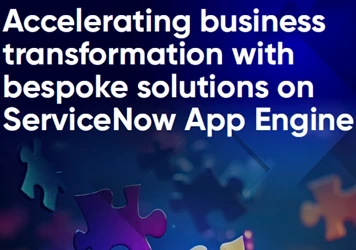Lean thinking is all about understanding and maximizing customer value while minimizing the use of resources. When an organization truly understands the customer value proposition, it can focus on developing and enhancing its processes to more effectively achieve the desired outcomes. The hunt for continual improvement opportunities encourages everyone – at all levels of the organization – to identify new ways to reduce resource usage and streamline workflows, to develop and deliver products faster, at a higher quality and at a lower cost.
Lean thinking is on the rise
Today, lean thinking has expanded well beyond its manufacturing origins. Lean practitioners can be found in private and public sector organizations across all kinds of industries, from information technology and health services to construction.
Lean organizations need to tap into the creative input of the people who are in the best position to offer constructive advice. This means encouraging those responsible for carrying out the work every day to come forward with new ideas.
Given the opportunity, most teams find it relatively easy to critique existing processes, unearthing a wealth of ideas and potential improvements. The problem is that if, after six months, those ideas remain on Post It notes or exist only as faded marks on a whiteboard, all the effort is wasted.
Turn OFIs into everyday action
For the true benefits of lean to be realized, the opportunities for improvement (OFIs), value-add and waste reduction ideas uncovered in lean projects or workshops must be successfully embedded into the day-to-day operations of the business. For many organizations, that’s a challenge.
It’s easy to recall an email or a new document saved in the weeks after a process workshop. It’s a different challenge altogether to incorporate these improvements into ‘how things are done’ by teams every day.
Transferring these ideas into a knowledge base - a controlled library of valuable know-how - creates a cycle that ensures processes are not static within lean organizations. They become dynamic and can be managed as an information asset.
Encourage a dynamic process improvement environment.
Here are four basic rules for any organization to establish a dynamic process environment that supports its lean methodologies:
- Create a solid process knowledge base.
Create a go-to place for processes, somewhere that everyone can quickly and easily refer to. Years ago, one of the most common presentations of the knowledge base was the three-ring binder, filed by each department and often never referred to again. These days, that’s unacceptable. Teams expect to interact with processes in the same way they use a good app or website. Online and easily navigable, the modern process knowledge base provides a place for interaction, invention and ingenuity.
- Establish process ownership.
A process owner is someone directly engaged in the process, a person who leads the process and is key to driving change. Every process should have an accountable process owner. The process owner is in the box seat to identify and fix unwieldy processes. When properly empowered, process owners will collaborate with others across the business to enact wide-ranging, beneficial change.
- Communicate processes in everyday language.
When teams refer to a documented process, they rightly expect to understand the information instantly. If processes are not easy to understand and follow, they will not be used. Think about your audience. Most processes should be written in simple, everyday language. They don’t need to be as complicated as many organizations make them. Searchable online databases of processes keep the communication simple, accessible and immediate.
- Recognize that within a dynamic environment, mistakes will be made.
When organizations become more agile, they soon discover that not every change is an improvement. Occasionally there are mistakes which provide an opportunity to learn. This is part and parcel of the lean process.
The ability to encourage and uncover new ideas that add value and reduce waste is at the heart of lean methodologies, but that’s just the beginning. To create a truly lean organization, processes must be accessible, usable and changeable and integrate automation that eliminates repetitive manual tasks. Without a platform for managing, automating and optimizing dynamic processes, many organizations have discovered just how difficult it can be to turn good ideas into everyday practice.


















